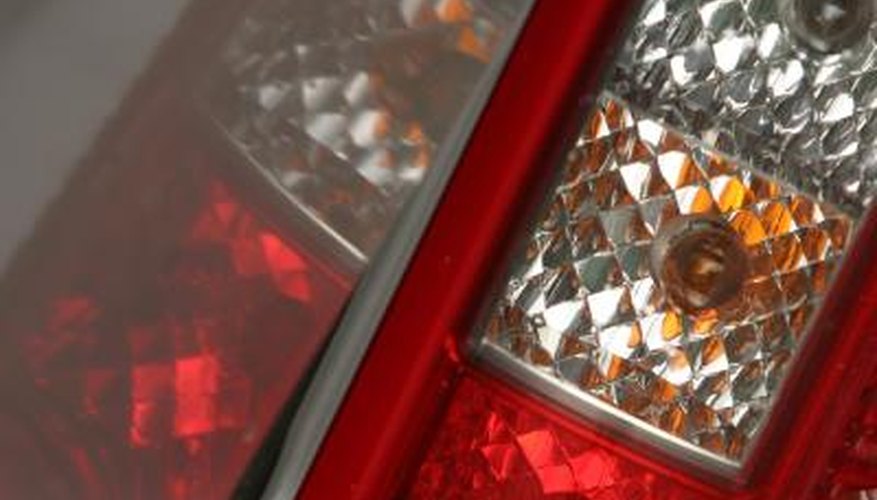Flasher relays control the operation of indicators and hazard flashers on many cars and motorcycles. When a flasher relay malfunctions, the indicators and hazard lights might glow dimly while the flasher itself emits a buzzing sound; not blink at all; pulse without turning completely off; or blink too quickly. If your vehicle is exhibiting any of these symptoms, testing the flasher relay is a good second step in diagnosing the problem (after checking for burnt bulbs) because flashers are prone to fail periodically and depend on a specific load to operate properly.
Identify the terminals. Flasher relays have a power source terminal, sometimes labelled "B" for battery, a load terminal labelled "L" and a panel, or dash-indicator terminal, labelled "P." The circuit diagram is usually printed on the case to facilitate identifying these. If they are not labelled, use an ohm meter to determine which prong is open at rest, i.e., has infinite resistance across to either of the others. This is the "P" terminal. The other two are interchangeable.
- Flasher relays control the operation of indicators and hazard flashers on many cars and motorcycles.
- Flasher relays have a power source terminal, sometimes labelled "B" for battery, a load terminal labelled "L" and a panel, or dash-indicator terminal, labelled "P." The circuit diagram is usually printed on the case to facilitate identifying these.
Clip the test light lead between the "P" terminal and the negative terminal of the battery.
Connect the "B" terminal to the positive terminal of the battery using the test wire with equal-length stripped ends, with one clip on each end.
- Clip the test light lead between the "P" terminal and the negative terminal of the battery.
- Connect the "B" terminal to the positive terminal of the battery using the test wire with equal-length stripped ends, with one clip on each end.
Wrap the long-stripped end of the second piece of wire around the base cylinder of the test bulb, securing it with a twist, and connect the short-stripped end to the "L" prong using the third clip.
Place the centre connector of the test bulb on the battery. At this point, the unit should start flashing, causing both the test light and the load bulb to blink. (The action will be twice as fast as usual because the test bulb represents half the normal load on the relay.) If the bulb and the test light blink at regular intervals, the relay is functioning properly. Otherwise, the unit needs replacement.
WARNING
Always exercise caution working with electricity. Use gloves to protect yourself. Make sure all temporary electrical connections are secure and not resting on a conducting surface. A clean towel or shop rag makes a good insulating surface if working under the bonnet. Older British cars and motorcycles may use a "positive-ground" electrical system. Be sure to reverse polarities accordingly if working on a "positive-ground" vehicle.
